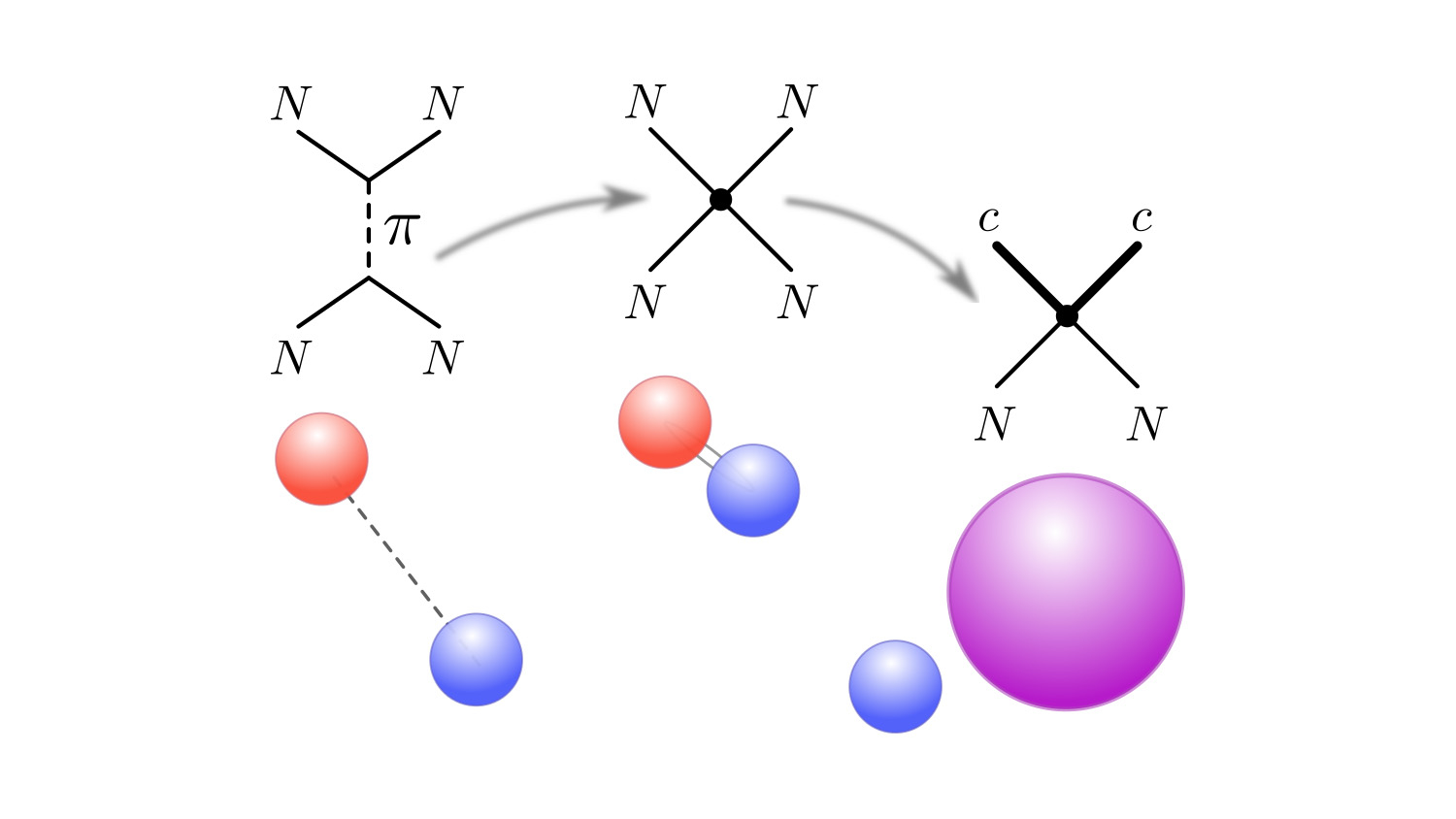Effective Field Theory: Q&A with Sebastian Koenig

If you’re a theoretical nuclear physicist, effective field theory (EFT) is a useful tool. Recently, Sebastian Koenig, assistant professor of physics, co-authored a survey of the EFT landscape. The Abstract sat down with Koenig to talk about what EFT is and how it helps nuclear physicists better understand the particles they study.
The Abstract (TA): Generally speaking, what is an effective field theory?
Koenig: Effective field theories are an important concept in modern theoretical physics. Simply put, they boil down microscopic details to their essential content by tailoring the mathematical formalism to the level of detail one aims to describe. This approach can be interpreted as choosing an appropriate “theoretical resolution,” much like screens that are watched only from a large distance can have much larger pixels than a smartphone to ensure the same visual impression. At the same time, they do not rely on particular model assumptions but strive to capture the essence of the physics in the most general way. This makes it possible to systematically improve predictions by adding subsequently more detail, and to fully quantify how precise predictions are at any chosen level of detail.
TA: How are you applying the concept of effective field theory to nuclear physics specifically?
Koenig: Among the four fundamental forces in nature it is the so-called “strong interaction” that plays a crucial role for the existence of visible matter in the universe. Just how exactly this mechanism, fundamentally described by the theory of quantum chromodynamics (QCD) as the interaction between quarks and gluons – elementary particles that can however not be observed in isolation – brings about the force that binds nucleons (protons and neutrons) together in atomic nuclei is one of the great open questions in physics and a matter of very active research. Effective field theories are at the center of this effort. In the spirit of picking an appropriate resolution, they allow us to formulate nuclear physics in terms of protons and neutrons while maintaining a direct connection to QCD that guides the construction of the theory. This connection is given by symmetries observed in nature, such as the fact that the strong interaction is nearly the same for protons and neutrons.
TA: How many effective field theories are there in nuclear physics? What does each one focus on?
Koenig: There are three effective theories that describe atomic nuclei in terms of nucleons or clusters of nucleons. While they differ in their resolution and reach of nuclei and nuclear reactions that can be described with them, they are all systematically connected to each other and to QCD. Beyond these three theories, reviewed in the paper, there are even more effective approaches that use collective degrees of freedom to describe rotations and vibrations observed in heavy nuclei. Overall, effective field theories have revolutionized nuclear physics and are increasingly conquering the chart of known nuclides.
TA: In the paper you recently published, you refer to these theories as a useful way to make sure that you’re using the proper “theoretical resolution” for a particular problem. Can you give an example of how that might work?
Koenig: Some nuclei have a pronounced cluster structure; that is, they can be interpreted as a few neutrons orbiting a compact core nucleus. Using effective field theories one can connect such systems to a microscopic description in terms of nucleons, and then use a cluster theory to predict, for example, reactions that are relevant to understand the formation of matter in the early universe.
This post was originally published in NC State News.